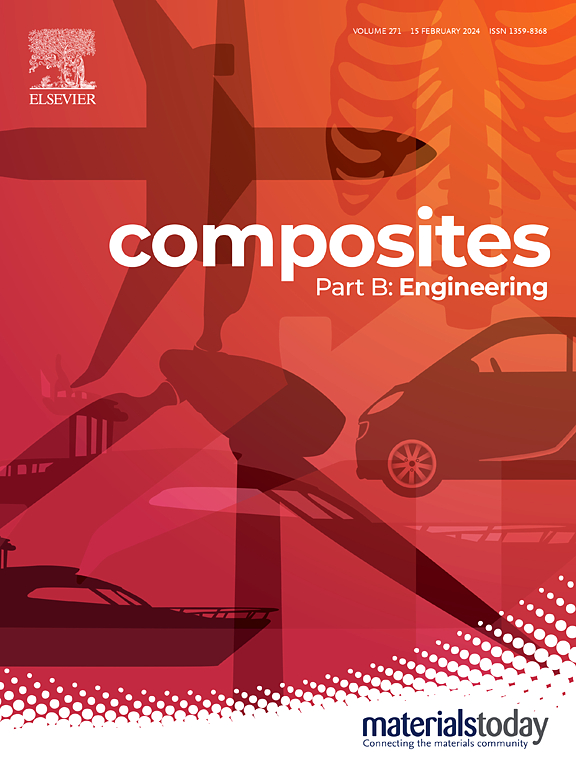Synchrotron X-ray diffraction and digital volume correlation of carbon fibre-reinforced polymers for enhanced characterisation of deformation behaviour
IF 12.7
1区 材料科学
Q1 ENGINEERING, MULTIDISCIPLINARY
引用次数: 0
Abstract
This paper demonstrates a new approach that exploits both lattice strain mapping via Wide Angle X-ray Scattering (WAXS) and Digital Volume Correlation (DVC) of Computed Tomography (CT) to understand the material response at different length scales in Carbon Fibre Reinforced Polymers (CFRPs) under in-situ loading, a phenomenon of substantial importance for the modelling, design, and certification of composite structures. WAXS gives insight into fibre lattice strain, while DVC provides sub-laminate response in the CFRP. A detailed numerical simulation was also developed to compare with these novel experimental methods. This approach is the first demonstration that the strain within the crystalline regions of the fibre is distinct from the sub-laminate behaviour, with up to 80 % and 36 % differences in the longitudinal and transverse directions, respectively, as a result of the complex microstructure of the fibres. An improved understanding of composite behaviour is fundamental to understanding how strain accommodation leads to structural failure, providing routes to refine part rejection criteria and reduce the environmental impact of this increasingly widespread material class.

碳纤维增强聚合物的同步加速器x射线衍射和数字体积相关,用于增强变形行为的表征
本文展示了一种新的方法,利用广角x射线散射(WAXS)的晶格应变映射和计算机断层扫描(CT)的数字体积相关(DVC)来了解碳纤维增强聚合物(CFRPs)在不同长度尺度下的材料响应,这一现象对复合材料结构的建模、设计和认证具有重要意义。WAXS提供了对纤维晶格应变的洞察,而DVC提供了CFRP的亚层压响应。并进行了详细的数值模拟,与这些新颖的实验方法进行了比较。这种方法首次证明了纤维晶体区域内的应变与亚层压行为不同,由于纤维的复杂微观结构,在纵向和横向上分别有高达80%和36%的差异。提高对复合材料性能的理解是理解应变调节如何导致结构破坏的基础,为改进零件报废标准和减少这种日益广泛的材料类别对环境的影响提供了途径。
本文章由计算机程序翻译,如有差异,请以英文原文为准。
求助全文
约1分钟内获得全文
求助全文
来源期刊

Composites Part B: Engineering
工程技术-材料科学:复合
CiteScore
24.40
自引率
11.50%
发文量
784
审稿时长
21 days
期刊介绍:
Composites Part B: Engineering is a journal that publishes impactful research of high quality on composite materials. This research is supported by fundamental mechanics and materials science and engineering approaches. The targeted research can cover a wide range of length scales, ranging from nano to micro and meso, and even to the full product and structure level. The journal specifically focuses on engineering applications that involve high performance composites. These applications can range from low volume and high cost to high volume and low cost composite development.
The main goal of the journal is to provide a platform for the prompt publication of original and high quality research. The emphasis is on design, development, modeling, validation, and manufacturing of engineering details and concepts. The journal welcomes both basic research papers and proposals for review articles. Authors are encouraged to address challenges across various application areas. These areas include, but are not limited to, aerospace, automotive, and other surface transportation. The journal also covers energy-related applications, with a focus on renewable energy. Other application areas include infrastructure, off-shore and maritime projects, health care technology, and recreational products.
 求助内容:
求助内容: 应助结果提醒方式:
应助结果提醒方式:


